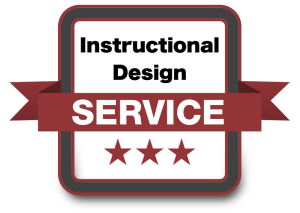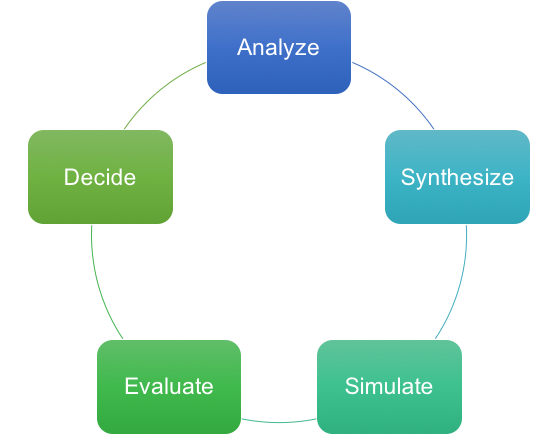[vc_row][vc_column][vc_cta h2=”Designers for Learning is trilled to be at #COABE16!” h4=”Attend our presentation Wednesday, April 13 at 11:00!” txt_align=”center” color=”black” add_button=”bottom” btn_title=”View Presentation Info” btn_color=”pink” btn_align=”center” btn_link=”url:https%3A%2F%2Fwww.dropbox.com%2Fs%2Fr0ywycz59dc7q6t%2F2016%2520COABE%2520DfL%2520Session%2520v6.pptx%3Fdl%3D0||target:%20_blank”][/vc_cta][vc_separator][/vc_column][/vc_row][vc_row][vc_column][vc_column_text]
Will you help us review our Open ABE MOOC?
Give us your feedback on our instructional design service MOOC to develop open educational resources for Adult Basic Education.
In the spring of 2016, Designers for Learning, offered a free instructional design service course. This 12-week course took place February 22 – May 15, 2016 on Canvas Network, a massive open online course (MOOC) platform. During this service-MOOC, participants engaged in a real-world authentic instructional design project that centered on the design and development of open educational resources (OER) for adult basic education (ABE). In this project-based course, participants gained instructional design experience while developing instructional materials that will be made available for free to adult educators and learners in the Adult Learning Zone group on OER Commons.
We are now reviewing the course in preparation to make revisions for a Fall 2016 implementation of the course, and we would like your feedback. Please share your feedback by taking a brief survey about what you feel is important to include in the course. Follow the link to the survey below.[/vc_column_text][vc_row_inner][vc_column_inner width=”1/3″][vc_single_image image=”6506″ img_size=”200×200″ alignment=”center” onclick=”custom_link” img_link_target=”_blank” link=”https://designersforlearning.org/”][/vc_column_inner][vc_column_inner width=”1/3″][vc_single_image image=”6493″ img_size=”400×100″ alignment=”center” onclick=”custom_link” img_link_target=”_blank” link=”https://www.canvas.net”][/vc_column_inner][vc_column_inner width=”1/3″][vc_single_image image=”6495″ img_size=”200×200″ alignment=”center” onclick=”custom_link” img_link_target=”_blank” link=”https://www.oercommons.org/”][/vc_column_inner][/vc_row_inner][vc_separator][vc_row_inner][vc_column_inner][vc_cta h2=”Share your expertise!” h4=”Please take a brief survey to help us improve our future projects.” txt_align=”center” color=”black” add_button=”bottom” btn_title=”Take Survey” btn_color=”pink” btn_align=”center” btn_link=”url:http%3A%2F%2Fdesignersforlearning.org%2Fopenabereview||target:%20_blank”][/vc_cta][/vc_column_inner][/vc_row_inner][/vc_column][/vc_row][vc_row][vc_column][vc_column_text]
What was the course focus?
This project-based course focused on a real-world instructional need. As a participant in this course, participants designed and developed open educational resources for adult basic education. They begin the design process by dissecting the adult basic education design scenario to explore key aspects of the opportunity. What are the needs, goals, and constraints? Who are the target learners? What is the instructional context? As part of the instructional design project, they describe their instructional solution within a written design proposal assignment. They then develop a prototype that will be the subject of a round of formative evaluation. As the final assignment, they submitted a complete unit of instruction that must conform to the project’s guidelines, and incorporate all necessary content presentation, learner practice, and assessment materials.[/vc_column_text][vc_separator][vc_cta h2=”View our Open ABE Service-Learning MOOC!” h4=”Free Course: February 22 – May 15, 2016 & Fall 2016″ txt_align=”center” color=”black” add_button=”bottom” btn_title=”View Course” btn_color=”pink” btn_align=”center” btn_link=”url:http%3A%2F%2Fdesignersforlearning.org%2Fopenabemooc||target:%20_blank”][/vc_cta][/vc_column][/vc_row][vc_row][vc_column][vc_column_text]
What were the costs & prerequisites?
- Cost: This course is free.
- Prerequisites: There are no prerequisites for the course.
- Required resource purchases: None.
[/vc_column_text][/vc_column][/vc_row][vc_row][vc_column][vc_separator][vc_column_text]
What was the time commitment?
To be successful in this course, participants were asked to devote 40 hours of time to the course (i.e. three to four hours per week). Like most experiences in life, the worth of this course is related to the time and effort committed to it. Therefore, while lurkers are welcomed, the experience is enhanced through active participant engagement in discussion and course activities. Their personal commitment to actively engage three to four hours per week in the course will help to support a worthwhile experience for them and others.[/vc_column_text][vc_column_text]
[/vc_column_text][vc_separator][/vc_column][/vc_row][vc_row][vc_column][vc_column_text]
Why should someone participate in this course?
Gain Experience for Good
Through engagement in this course, participants furthered their own professional development in instructional design, while offering their service contributions to a grossly underserved educational segment of adult learners and instructors. In the U.S. alone, 30 million adults do not have high school credentials, but less than 2 million are currently supported within federally funded adult education programs. While we had a U.S.-centric focus on this project, support for adult education is a need around the globe, and the open educational resources created on on this project can be adapted for other contexts.
Earn an Instructional Design Service Badge
Upon successful completion of this course, participants will earned an Instructional Design Service Badge to acknowledge they had completed an instructional design process to develop an educational resource to support a social need. In other words, they gained experience for good! To earn an Instructional Design Service Badge, participants were required to:
- Complete the requirements in Modules 1-6.
- Submit a final deliverable as required in Module 7.
Earn a Certificate of Recognition
Upon successful completion of this course, participants also received a Certificate of Recognition* from Designers for Learning recognizing their instructional design service contribution. Successful completion was based on:
- Successful completion of all Instructional Design Service Badge requirements (see requirements above)
- Submission of a complete final deliverable meeting all of the requirements for upload to the Adult Learning Zone group on OER Commons
* Please note that we did not offer a letter of reference or other certifications based on this experience given the relatively short duration of the project (i.e. an estimated 40 hours of design work), and the anticipated number of participants.
Expand CV, Resume, or Portfolio
We suggested ways participants in the service-MOOC should describe this service-learning experience in a CV, resume, or portfolio, including:
- Describe this course experience within the “service” section of your CV or resume.
- Include that you were a participant in a service-learning project facilitated by Designers for Learning.
- Note the scope and duration of the project, and the number of service hours you spent working on the instructional design project.
- Provide details of your specific contribution, and the outcome of your efforts.
- Given that all content produced within this project is released under a Creative Commons license, feel free to include copies of the work you produced on this project within your design portfolio.
[/vc_column_text][vc_separator][/vc_column][/vc_row][vc_row][vc_column][vc_column_text]
What did participants do in this course?
During this 12-week course, participants progressed through a basic design cycle (see figure below) within seven course modules. Each module contained material for review and activities to complete related to the instructional design project they were completing to develop open educational resources for adult basic education. The module activities include individual practice exercises, reflections, and assignments, as well as conversation prompts to ponder within a whole class discussion forum.
This course was designed to be self-guided, and participants worked at their own pace reviewing each module’s materials, participating in the prompted discussions, and completing individual assignments. However, due dates wre included for most discussions and assignments to keep everyone on track to complete the course by May 15, 2016.[/vc_column_text][vc_separator][/vc_column][/vc_row][vc_row][vc_column][vc_column_text]
What support did participants receive in this course?
While this course was designed to be self-guided, a team of volunteer facilitators was available to support participants’ progress through the course. Given the size of the course, the facilitators did not review or grade individual assignments, but they were available to answer questions in the online help forums. In addition, other participants in the class and the facilitators shared their perspectives within the discussion forums, and participated in the prototype evaluation.[/vc_column_text][vc_separator][/vc_column][/vc_row][vc_row][vc_column][vc_row_inner][vc_column_inner][vc_column_text]
What was the instructional design project?
This was a project-based course that focused on a real-world instructional need. Participants gained instructional design experience while developing open educational resources that were made available for free to adult educators and their learners. Here is an overview of the instructional design project:
- The open educational resources you design and develop will support adult learners who have not completed high school and are taking adult basic education courses as they prepare for high school equivalency exams (i.e. the GED, HiSET, or TASC tests) or other certifications.
- The instruction you design will align with the College and Career Readiness Standards (CCRS) that underly high school equivalency exams and other adult basic education programs.
- You are able to select the topic of the instruction from the following subject areas:
- English Language Arts and Literacy (includes Social Studies and Science topics)
- Mathematics
- The open educational resources you design and develop will incorporate all necessary content presentation, learner practice, and assessment materials for 15-30 minutes of instruction on the standard and topic you have chosen, as well as guidance for instructors regarding use of these materials.
[/vc_column_text][/vc_column_inner][/vc_row_inner][vc_separator][/vc_column][/vc_row][vc_row][vc_column][vc_column_text]
Did they work on the instructional design project alone?
While this course was designed for individuals working alone on an instructional design project, participants were able to work on the instructional design project with others, including as part of a class project or practicum in an instructional design program. In addition, faculty were invited to include this project in an instructional design class they were teaching.[/vc_column_text][vc_separator][/vc_column][/vc_row][vc_row][vc_column][vc_row_inner][vc_column_inner][vc_column_text]
Why was this called a “service” course?
This course is a service-learning experience where participants gained experience for good. Service learning is an educational approach that incorporates academic coursework with opportunities for applied learning. Service-learning is a unique form of experiential learning in that community service is a central component of the experience. A hallmark of service learning is the reciprocal benefit gained by the learner from the experience, and by the community from the service provided.[/vc_column_text][/vc_column_inner][/vc_row_inner][vc_single_image image=”6504″ img_size=”300×300″ alignment=”center”][vc_separator][/vc_column][/vc_row][vc_row][vc_column][vc_column_text]
Why is adult basic education an important need?
This infographic prepared by Digital Promise summarizes key findings from the Organization for Economic Cooperation and Development (OECD). It highlights the importance of the need to support the millions of U.S. adults with low literacy and math skills.

[/vc_column_text][vc_separator][/vc_column][/vc_row][vc_row][vc_column][vc_column_text]
What are Open Educational Resources?
In this course, you will gain instructional design experience while developing open educational resources that will be made available for free to educators who provide educational opportunities to these adult learners. As defined by the William and Flora Hewlett Foundation:
Open educational resources (OER) are teaching, learning, and research resources that reside in the public domain or have been released under an intellectual property license that permits their free use and re-purposing by others. Open educational resources include full courses, course materials, modules, textbooks, streaming videos, tests, software, and any other tools, materials, or techniques used to support access to knowledge.
[/vc_column_text][vc_separator][/vc_column][/vc_row][vc_row][vc_column][vc_column_text]
Who were the course designers and facilitators?
A unique aspect of this course is that it was designed and facilitated by an all volunteer team with Designers for Learning. Starting in the fall of 2015, a team of volunteers spent 13 weeks designing and developing this course. Another team is volunteering for 12 weeks as your course facilitators. The team of volunteers included professional instructional designers and adult educators with years of subject matter experience. For more information about the design team, the subject matter experts, and the design process, please visit our website where you will find:
- A team roster of our volunteer designers, subject matter experts, and the course facilitators.
- Webcast recordings of our design meetings.
- Design updates about this course as it was being designed and developed
By the end of this course, these professional educators and instructional designers volunteered over 1,000 hours of their time to design and facilitate this service-learning experience. A conservative estimate of the professional services donated by the volunteers who designed and are facilitating this course exceeds $50,000. We thank them for their volunteer service![/vc_column_text][vc_separator][/vc_column][/vc_row][vc_row][vc_column][vc_row_inner][vc_column_inner][vc_column_text]
Questions or Comments?
[/vc_column_text][/vc_column_inner][/vc_row_inner][vc_cta h2=”Join Our Email List!” h4=”Submit your contact information to receive updates about our projects.” txt_align=”center” color=”black” add_button=”bottom” btn_title=”Join Us” btn_color=”pink” btn_align=”center” btn_link=”url:http%3A%2F%2Fdesignersforlearning.org%2Fcontact||target:%20_blank”][/vc_cta][/vc_column][/vc_row]


